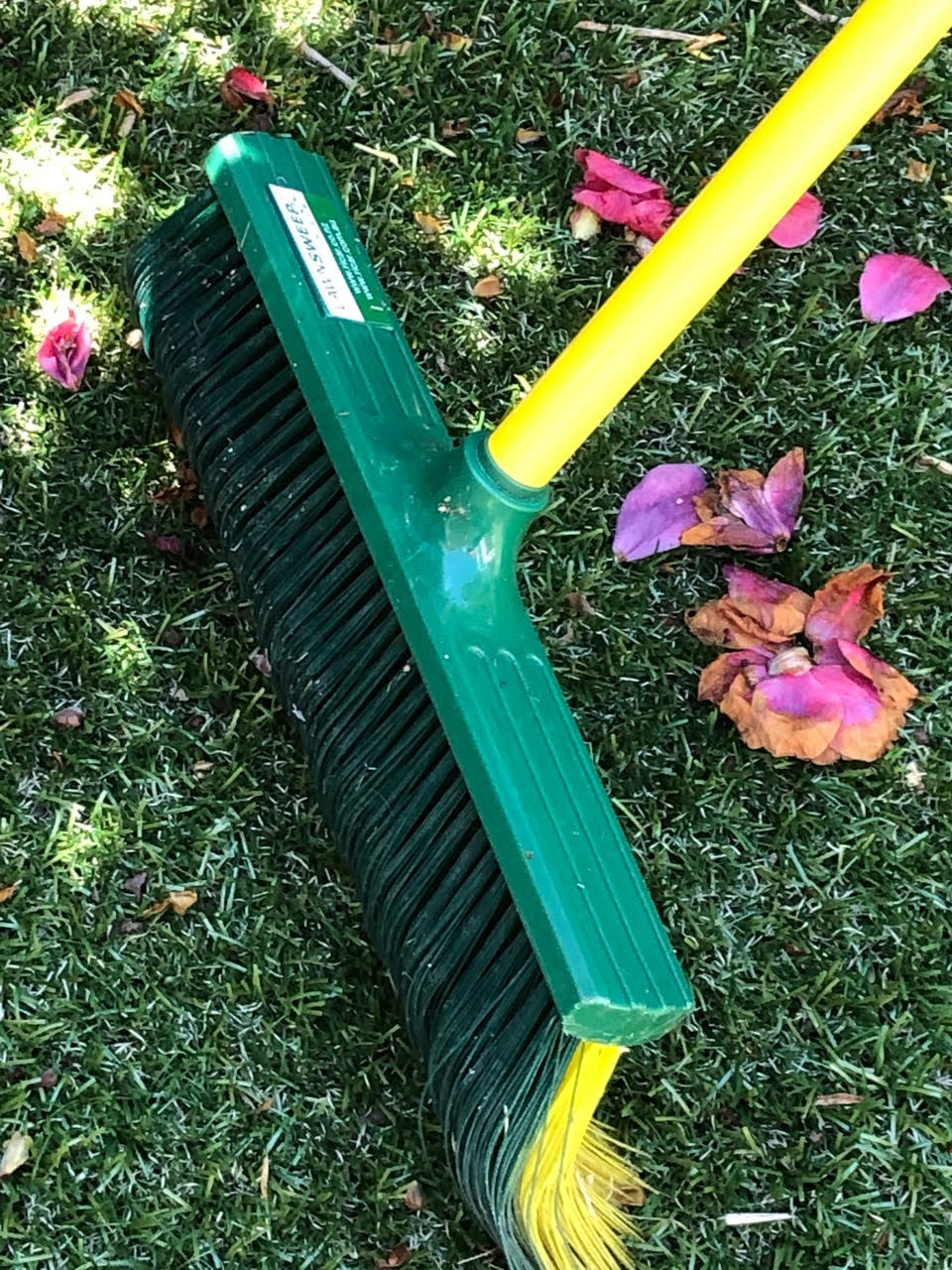
MAINTENANCE GUIDE
A crucial tip for maintaining your synthetic turf lawn is to do a little, often, rather than neglecting the lawn for a few months and being faced with a major maintenance program to restore your synthetic turf lawn to its optimum condition.
It will take 2-3 months for your new synthetic turf lawn to settle and reach its optimum condition. During this period the infill materials penetrate the fibre pile and settle into the turf structure. Light grooming using a medium soft bristle brush on a regular basis will help the pile remain upright, aid infill settlement and promote the life of the installation.
The main reason for brushing is to stimulate the top fibres of your synthetic turf lawn, aiding them to remain vertical. We recommend light brushing at least once every month and action in a number of alternate directions. Some infill may appear on the top of your synthetic turf lawn from time to time, but this only requires light brushing to restore it to the turf structure.
Animal feces should be removed manually from your synthetic turf lawn as soon as you find it and the area washed down with a warm soapy solution such as household washing up liquid. The feces will not damage your synthetic turf lawn but will work its way into the synthetic turf structure. The longer it is left the harder it will be to clean out.
If you follow the foregoing recommendation for debris removal you will dramatically reduce the chances of moss/algae and weeds forming on / in your synthetic turf lawn. We recommend moss / weed killing should take place once a year with water-based systematic weed killer:
- Weeds: Simazine: is a herbicide of the triazine class. The compound is used to control broadleaf weeds and annual grasses.
- Moss/Agae: Wet and Forget – It has a unique combination of biodegradable selective surfactants for moss removal, mould removal and gunge removal on any exterior surface. Please remember to remove all dead matter including
Most stains can be removed from your synthetic turf lawn with warm soapy water, household grade detergent such as washing up liquid, and ‘elbow grease’! Heavy oil marks are removed using mineral spirits and a cloth; remembering to wash down the cleaned area with water to dilute the spirit residue.
For superficial burns in your synthetic turf lawn, carefully clip the pile with scissors just below the blackened or melted tips. For large deep burns you may need to replace that section of synthetic turf lawn therefore we recommend that you contact your local installer for professional care.
Only light vehicles under 1-ton, fitted with wide, low-pressure tyres (8 to 10 psi) should be allowed on your synthetic turf lawn.
You should avoid using/taking the following items onto your synthetic turf lawn:
- Glass, tin or ceramics: broken sharp objects can bury themselves into the turf structure and potentially cause injury or damage your synthetic turf lawn
- Cigarettes or hot works: although your synthetic turf lawn has a fire safety rating, open flames and hot items may melt the fibre pile
- Chewing gum: again this can be removed by freezing the gum and chipping it off the surface, but it is strongly recommended to avoid this situation